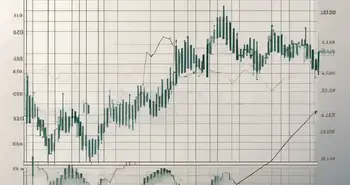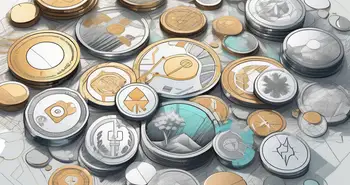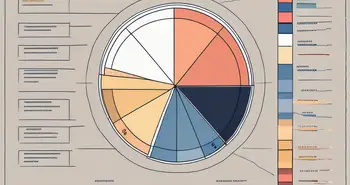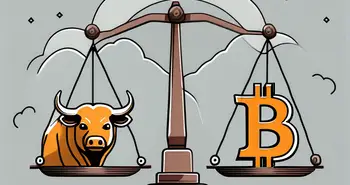How Tokenisation Could Democratise Investing
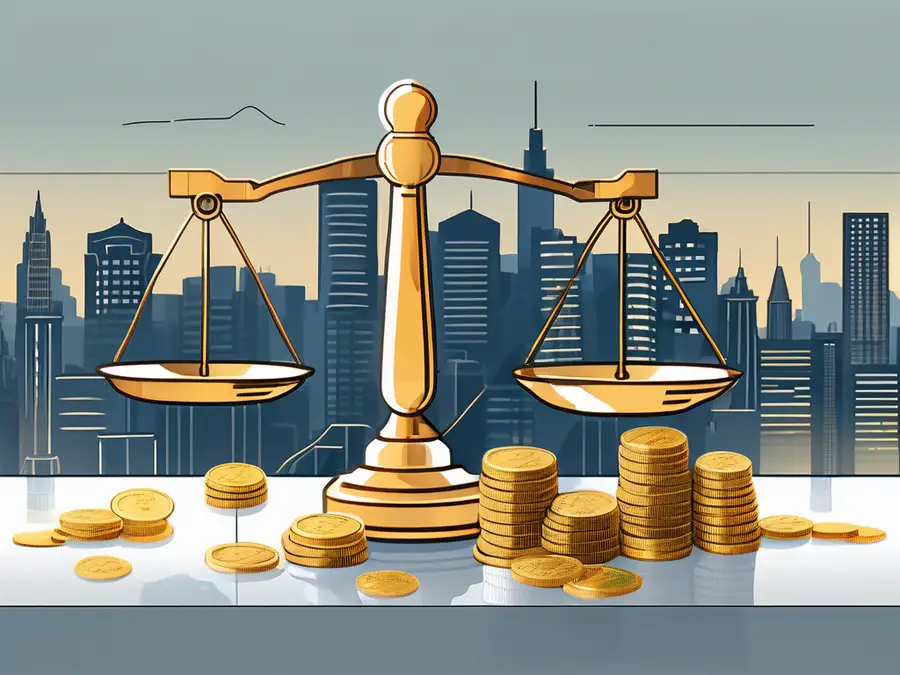
In this article, we will explore how tokenisation has the potential to democratise investing. Tokenisation is a revolutionary concept that can transform the investment landscape, making it more accessible to a wider range of individuals. By breaking down traditional barriers and leveraging the power of blockchain technology, tokenisation offers new opportunities for investors to diversify their portfolios and participate in previously exclusive markets.
Understanding the Concept of Tokenisation
Tokenisation refers to the process of converting real-world assets, such as real estate or artwork, into digital tokens. These tokens are then stored and managed securely on a blockchain, providing transparency and immutability. By representing tangible assets in a digital form, tokenisation allows for fractional ownership, unlocking liquidity and enabling investors to trade assets more easily.
Tokenisation has gained significant attention in recent years due to its potential to revolutionise traditional financial systems. The concept of tokenising assets has opened up new possibilities for investors, offering them access to markets that were previously out of reach. Let's delve deeper into the basics of tokenisation and the role of blockchain in this transformative process.
The Basics of Tokenisation
At its core, tokenisation allows for the division of assets into smaller units, making it possible for multiple investors to own a portion of an asset. This fractional ownership opens up investment opportunities that were previously only accessible to institutional investors or high-net-worth individuals. For example, instead of needing to purchase an entire property, investors can now own a fraction of it, making real estate investment more attainable.
Tokenisation not only enables fractional ownership but also enhances liquidity in traditionally illiquid markets. By breaking down assets into smaller units, tokenisation allows investors to buy and sell these tokens more easily. This increased liquidity makes it possible for investors to diversify their portfolios and mitigate risks effectively.
Furthermore, tokenisation introduces the concept of programmable ownership. Smart contracts, which are self-executing contracts with predefined conditions, can be used to automate and enforce the terms of ownership and transfer of these tokenised assets. This automation eliminates the need for intermediaries, reducing costs and increasing efficiency in the asset transfer process.
The Role of Blockchain in Tokenisation
Blockchain technology provides the foundation for tokenisation by ensuring security, transparency, and decentralisation. With blockchain, each transaction is recorded on a distributed ledger, eliminating the need for intermediaries and reducing potential fraud. The decentralised nature of blockchain ensures that no single entity has control over the tokenised assets, enhancing trust and security.
One of the key advantages of using blockchain for tokenisation is the immutability of the recorded transactions. Once a transaction is recorded on the blockchain, it cannot be altered or tampered with, providing a transparent and auditable history of asset ownership and transfers. This transparency builds trust among investors and reduces the risk of fraudulent activities.
Additionally, blockchain technology enables global accessibility to tokenised assets. Investors from different parts of the world can participate in the ownership and trading of these assets, breaking down geographical barriers and expanding investment opportunities. This global reach opens up new avenues for diversification and investment growth.
Moreover, the use of blockchain in tokenisation has the potential to streamline regulatory compliance. By incorporating compliance rules directly into smart contracts, tokenised assets can adhere to regulatory requirements automatically. This automation reduces the administrative burden and ensures that transactions are conducted within the legal framework.
In conclusion, tokenisation is a transformative concept that allows for the digitisation of real-world assets, enabling fractional ownership and enhancing liquidity. Blockchain technology plays a crucial role in providing the necessary security, transparency, and decentralisation for tokenisation to thrive. As the world continues to embrace the potential of tokenisation, we can expect to see further advancements in this space, unlocking new investment opportunities and reshaping traditional financial systems.
The Current State of Investing
Before diving deeper into how tokenisation can democratise investing, it's essential to understand the current state of the investment landscape.
Investing has always been a way for individuals to grow their wealth and secure their financial future. However, the traditional methods of investing have often presented challenges and limitations that hindered widespread participation.
Traditional Investment Methods
Traditional investing typically involves purchasing whole assets or shares through intermediaries like banks or brokers. This approach has been the norm for many years, but it comes with its own set of drawbacks.
One of the main issues with traditional investing is the high fees associated with it. Banks and brokers charge various fees, including transaction fees, management fees, and custodian fees. These fees can eat into an investor's returns and make it less attractive for those with limited funds to get involved.
Another challenge is the limited accessibility of traditional investments. Many exclusive investment opportunities are only available to high-net-worth individuals or institutional investors. This leaves regular investors with fewer options and fewer chances to diversify their portfolios.
Furthermore, traditional investments often come with regulatory compliance requirements. These requirements can be complex and time-consuming, making it difficult for individual investors to navigate the legal procedures involved.
Lastly, traditional investments often lack diversification. Investors are typically limited to a narrow range of asset classes, such as stocks, bonds, and real estate. This lack of diversification can expose investors to higher risks and limit their ability to capitalize on emerging investment trends.
Barriers in the Investment World
The investment world has long been marred by barriers that prevent many individuals from participating. These barriers go beyond the challenges associated with traditional investing methods and further exclude regular investors from lucrative opportunities.
One significant barrier is the high minimum investment requirements imposed by many investment opportunities. These requirements often make it impossible for individuals with limited funds to participate in certain investments, leaving them at a disadvantage.
Another barrier is the restricted access to exclusive markets. Some investment opportunities are only available to a select group of individuals or institutions, shutting out regular investors from potentially profitable ventures.
Complex legal procedures also pose a significant barrier to entry in the investment world. The legal framework surrounding investments can be convoluted and difficult to navigate, especially for individual investors without legal expertise. This creates a barrier that discourages many from exploring investment opportunities.
Furthermore, limited liquidity for certain assets can hinder investors' ability to buy or sell their investments quickly. Illiquid assets can tie up an investor's capital for an extended period, limiting their flexibility and potentially hindering their ability to take advantage of other investment opportunities.
Overall, these barriers in the investment world have created an uneven playing field, where regular investors often find themselves excluded from lucrative investment opportunities. However, emerging technologies and innovative approaches are now challenging the status quo and paving the way for a more inclusive and accessible investment landscape.
The Intersection of Tokenisation and Investing
Tokenisation represents a powerful intersection between traditional investing and the potential of blockchain technology. By leveraging this intersection, we can unlock a new era of democratic investing.
But what exactly is tokenisation and how does it change the investment landscape? Let's delve deeper into this fascinating concept.
How Tokenisation Changes the Investment Landscape
The introduction of tokenisation brings liquidity to traditionally illiquid markets. Previously, investments such as fine art or venture capital required substantial capital and long holding periods. With tokenisation, these assets can be divided into tokens, allowing investors to buy and sell fractions of them more easily. This increased liquidity not only benefits investors but also provides new opportunities for asset owners to unlock value from their holdings.
Imagine being able to invest in a Picasso painting or a promising startup without having to shell out millions of dollars. Tokenisation makes this possible by breaking down these assets into smaller, more affordable units. This opens up a world of investment opportunities for individuals who were previously excluded from such markets.
Furthermore, tokenisation enables fractional ownership, allowing investors to diversify their portfolios by investing in multiple assets that were previously out of reach. This not only spreads risk but also provides a chance to participate in the potential upside of various assets.
Benefits of Tokenised Assets in Investing
Tokenised assets offer several advantages over traditional investments. Firstly, they provide fractional ownership, allowing investors to diversify their portfolios by investing in multiple assets that were previously out of reach. This means that instead of putting all their eggs in one basket, investors can spread their investments across a range of tokenised assets, reducing risk and increasing potential returns.
Secondly, tokenisation enables investments to be traded 24/7 on digital platforms, enhancing convenience and accessibility. Gone are the days of waiting for the stock market to open or dealing with cumbersome paperwork. With tokenised assets, investors can buy and sell their holdings at any time, from anywhere in the world, with just a few clicks.
Last but not least, by leveraging blockchain technology, tokenised assets can provide a higher level of transparency and security compared to traditional investments. Every transaction is recorded on the blockchain, creating an immutable and auditable trail of ownership. This not only reduces the risk of fraud but also instills confidence in investors, knowing that their investments are protected by the power of cryptography.
Tokenisation is not just a buzzword; it represents a fundamental shift in the way we invest. By breaking down barriers and introducing liquidity to previously illiquid markets, tokenisation opens up a world of possibilities for both investors and asset owners. The future of investing is here, and it's tokenised.
The Democratization Effect of Tokenisation
One of the most significant impacts of tokenisation is its potential to democratise investing.
Breaking Down Investment Barriers with Tokenisation
Tokenisation eliminates many of the barriers that have traditionally prevented regular investors from accessing exclusive investment opportunities. With fractional ownership, investors can participate in previously unattainable markets, such as high-end real estate or rare collectibles. The ability to invest smaller amounts in these assets allows individuals to diversify their portfolios and reduce risk while potentially achieving higher returns.
Ensuring Fairness and Accessibility in Investing
Tokenisation creates a level playing field by providing equal opportunities for all investors, regardless of their wealth or connections. By leveraging blockchain technology, smart contracts can enforce predefined rules, ensuring fairness and transparency in the investment process. Additionally, the use of decentralized platforms makes investing accessible on a global scale, breaking down geographical barriers and fostering a more inclusive investment ecosystem.
Potential Challenges and Solutions
While tokenisation offers exciting possibilities for democratizing investing, it also presents some challenges that need to be addressed.
Regulatory Hurdles in Tokenisation
Regulatory frameworks vary across jurisdictions, and tokenisation involves legal complexities that need to be navigated. To ensure the widespread adoption of tokenisation, governments and regulatory bodies must establish clear guidelines to protect investors while fostering innovation. Collaboration between industry experts and regulators is crucial to strike the right balance.
Overcoming Technical Challenges in Tokenised Investing
Tokenised investing relies on robust technology infrastructure to support the seamless trading of assets. Scalability, security, and interoperability are key technical considerations that must be addressed to ensure the smooth functioning of tokenised investment platforms. Continued advancements in blockchain technology and infrastructure will play a vital role in overcoming these challenges.
FAQ
What is tokenisation?
Tokenisation is the process of converting real-world assets into digital tokens that are stored and managed on a blockchain. It allows for fractional ownership and increased liquidity in traditionally illiquid markets.
How does tokenisation democratise investing?
Tokenisation democratises investing by breaking down barriers that have traditionally prevented regular investors from accessing exclusive investment opportunities. Fractional ownership and increased liquidity enable individuals to diversify their portfolios and participate in previously unattainable markets.
What are the benefits of tokenised assets?
Tokenised assets offer fractional ownership, diversification, and increased accessibility. They can be traded 24/7 on digital platforms, providing convenience and flexibility. Additionally, tokenised assets leverage blockchain technology, offering greater transparency, security, and immutability compared to traditional investments.
What are the challenges of tokenised investing?
Tokenised investing faces regulatory hurdles and legal complexity. Governments and regulatory bodies need to establish clear guidelines to protect investors while promoting innovation. Technical challenges, such as scalability and interoperability, also need to be addressed to ensure the seamless functioning of tokenised investment platforms.
In conclusion, tokenisation has the potential to revolutionise investing by making it more accessible, inclusive, and transparent. By leveraging blockchain technology, tokenised assets offer fractional ownership, diversification, and increased liquidity. Although there are challenges to overcome, the democratization effect of tokenisation is poised to reshape the investment landscape, enabling individuals from all walks of life to participate in previously untapped markets.
Ready to embrace the future of investing? Join Morpher today and be part of the revolution that's democratizing trading across the globe. With Morpher.com, you can enjoy zero fees, infinite liquidity, and the freedom to trade 24/7 across a multitude of asset classes. Whether you're interested in fractional investing, short selling, or leveraging up to 10x, Morpher offers a unique and user-centric trading experience tailored to your needs. Sign up now to take control of your investment journey and get your free sign-up bonus. Don't miss out on the opportunity to transform the way you trade with Morpher.

Disclaimer: All investments involve risk, and the past performance of a security, industry, sector, market, financial product, trading strategy, or individual’s trading does not guarantee future results or returns. Investors are fully responsible for any investment decisions they make. Such decisions should be based solely on an evaluation of their financial circumstances, investment objectives, risk tolerance, and liquidity needs. This post does not constitute investment advice.

Painless trading for everyone
Hundreds of markets all in one place - Apple, Bitcoin, Gold, Watches, NFTs, Sneakers and so much more.

Painless trading for everyone
Hundreds of markets all in one place - Apple, Bitcoin, Gold, Watches, NFTs, Sneakers and so much more.

